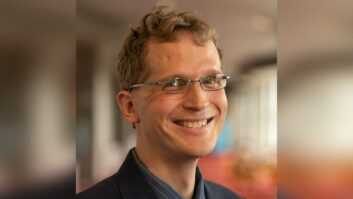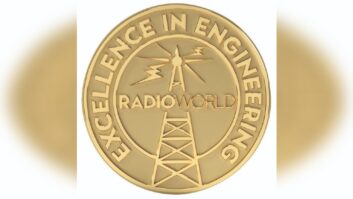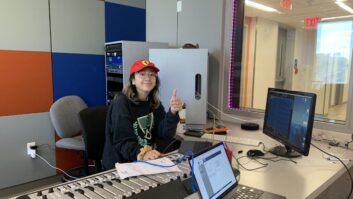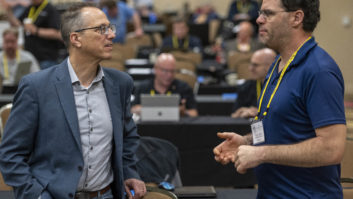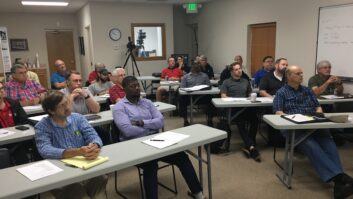CHICAGO — As new technologies rapidly expand into nearly every facet of maintaining a modern radio facility, planners of the engineering program at this month’s Radio Show are focusing on three main physical asset categories in a series of presentations and tutorials.
“This year the Radio Show Engineering Program is focusing on ways to improve operating efficiency. Ways to save operating dollars and boost revenue are being explored from an engineering perspective,” said John Marino, vice president of NAB Science & Technology and one of the program’s planners.
For example, a session features the efficiency calculator developed by Cavell, Mertz & Associates to help engineers find ways to make energy-saving transmitter facility improvements. Studies will be presented by Clear Channel and Emmis that examine opportunities to tap new revenue by using a station’s broadcast signal to transmit ancillary data.
Studio/Production Day
Developments in studio design and audio production will be the focus of the first day of the engineering program, Wednesday, Sept. 14. Recent trends in studio acoustics, HVAC concerns, remote broadcast capability and social media opportunities will be addressed.
(click thumbnail)
New York Public Radio’s facility will be featured. Shown: Control Room 2; the News Hub, where elements of newscasts for WNYC(AM/FM) and WQXR(FM) are created; and Control Room 5, where WNYC(FM)’s music show “Soundcheck” is produced. The API Vision console has a custom insert to interface with an SAS 32KD router system without using an outboard mixer.

“I think it is more important than ever for an engineer to stay aware of what is happening in our field,” said Jim Stagnitto, director of engineering for New York Public Radio. “You never know when something small can turn into a huge problem-solver.”

Paul Shulins, director of technical operations for Greater Media’s Boston cluster, will share thoughts about planning for the future and sorting fads from real trends.
Stagnitto, involved with studio design and construction, installation of new transmitter sites and systems integration for 28 years in the New York City broadcast community, will discuss the evolution of WNYC(FM) and New York Public Radio.
WNYC, which moved into a new facility in downtown Manhattan in 2008, will be the focus of Stagnitto’s presentation “The Studio Evolution of WNYC & New York Public Radio.” He will offer a visual tour of the facility and discuss how it has evolved since 2008.
“I’ve noticed more facilities are making accommodations for live music performances. Not necessarily a full-blown performance space with audience seating, but configuring studio space and technical equipment in a way that would make it easier to do it,” Stagnitto said.

A fisheye view of Greater Media’s Boston transmitter site, with engineer David Wing.
Paul Shulins, director of technical operations for Greater Media’s Boston cluster, has been working as a chief engineer for 22 years. He will present a “Consolidated Radio Facilities Case Study,” examining the challenges, achievements and surprises that Greater Media/Boston experienced since the company built consolidated facilities in 1998 for its five Boston radio stations.
“The consolidation of facilities was, as far as technology was concerned, really a quantum leap back in 1998. Many changes have outdated the technology from the turn of the century,” Shulins said. “However, most of the decisions we made back then were made in a way that allowed an upgrade path to the future without destroying the infrastructure.”
Shulins will share thoughts about planning for the future and sorting fads from real trends in the industry.
“That’s not an easy task and nearly impossible to get right all the time. Much of it has to do with external forces outside our industry. For instance, Apple changing the way people listen to music,” he added.
Gary Kline, vice president of engineering and IT for Cumulus, and Glynn Walden, senior vice president of engineering for CBS Radio, will also make studio design presentations.
Transmission/Distribution Day
Engineering Sessions
Wednesday, Sept. 14
9 a.m.–11:45 a.m. “Studio Production Day—The Modern Multiplatform Radio Station”
1–2 p.m. “Studio Production Day” (dontinued)
2:15–3:30 p.m. “The Multiplatform Radio Station”
Thursday, Sept. 15
8 a.m.–12 p.m. “Transmission/Distribution Day— Operating More Efficiently”
1:45–4:30 p.m. NRSC Meetings
Friday, Sept. 16
9–10:15 a.m. “Tower Day—Management, Maintenance and Safety”
10:30–11:45 a.m. “Tower Day” (continued)
Maintenance issues, case studies and energy saving tips will be featured on Thursday, Sept. 15. Panelists include Jeff Littlejohn, executive vice president of engineering and systems integration for Clear Channel Radio; Garrison Cavell, president of Cavell, Mertz & Associates; and Steve Lockwood, senior engineer at Hatfield & Dawson Consulting Engineers.
Paul Brenner is senior vice president and chief technology officer for Emmis Communications; he’s also president of the Broadcaster Traffic Consortium, a partnership of eight radio companies formed to distribute data via HD Radio and RDS. Brenner will discuss HD Radio distribution and will present an overview of Emmis’ cloud-computing approach to running and supporting more advanced applications via HD Radio datacasting.
“Digital radio is going to drastically grow data and advanced audio services in 2012 and beyond. This is no longer a chicken-and egg-scenario, so broadcasters need to deeply understand the HD Radio chain and improve their systems,” Brenner said.
The day includes sessions called “Care and Feeding of Streaming Media” and “Hybrid Radio — A New Broadcast Model,” and concludes with John Ousby, director of broadcast services for vTuner, discussing the advantages of audio over IP at “Radio — Not Just Another App.”
Tower Day
Exhibit Hours
To encourage booth visits, “The Marketplace” will feature an opening reception, super sessions, coffee breaks, a network lounge and a Thursday lunch buffet.
Wednesday, 4:30–7 p.m.
Thursday, 9 a.m.–5 p.m.
Friday, 9 a.m.–Noon
Tower construction, maintenance, safety and management discussion conclude the engineering program on Friday, Sept. 16. The half-day session also will look at ways broadcasters can turn vertical real estate into a profit center.
“There are definitely ways to attract wireless carriers to broadcast towers. The need for wireless installations is expected to continue to grow over the next three to five years,” said Adam Kauffman, managing director for NTP Wireless.
If radio broadcasters want to attract wireless carriers to their towers, they need to understand that the process of acquiring tenants needs to be straightforward and favorable for wireless carriers, Kauffman said.
“Structural capacity is a key issue. Standards have been revised recently that have taken some towers from passing to failing structural analysis with increased loading. Access to sites is another crucial component of any tower lease agreement. Wireless carriers need 24/7 access and that is a deal breaker if not granted.”
The program concludes with “Collocation: Keys to Maintenance and Safety,” which visits RF exposure and OSHA rules and features Duane C. MacEntee, president and chief operating officer of Stainless LLC.






